#j penry
Explore tagged Tumblr posts
Text

Orchid - S/T (Ebullition, 2002) Genre: Screamo, Post-Hardcore Artwork: Jayson Green, J. Penry (illustration of Angela Davis) Bandcamp
19 notes
·
View notes
Text


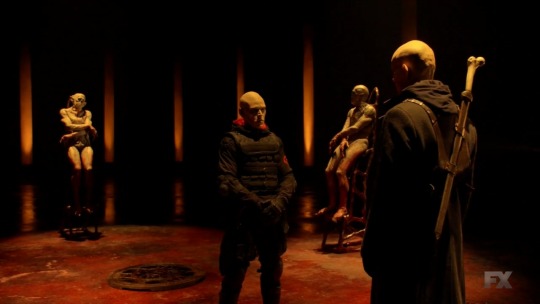
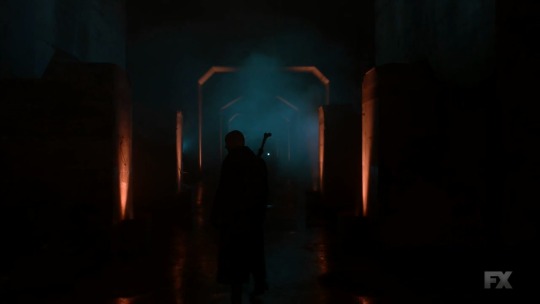




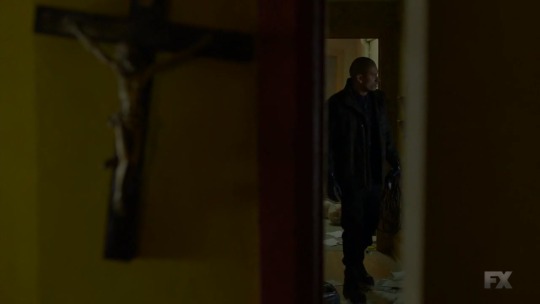

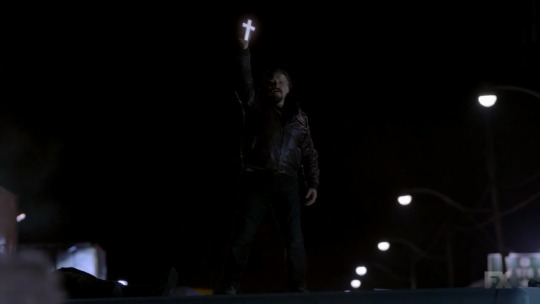

The Strain, Season Three (2016)
Directed by J. Miles Dale, Ken Girotti, Deran Sarafian, TJ Scott, Vincenzo Natali & Carlton Cuse
#scenesandscreens#j. miles dale#ken girotti#deran sarafian#tj scott#vincenzo natali#carlton cuse#the Strain#Joaquín Cosío#samantha mathis#Rupert Penry-Jones#ruta gedmintas#Max Charles#Ben Hyland#miguel gomez#Natalie Brown#kevin durand#Richard Sammel#Sean Astin#jack kesy#Mía Maestro#jonathan hyde#sean astin#corey stoll
26 notes
·
View notes
Text
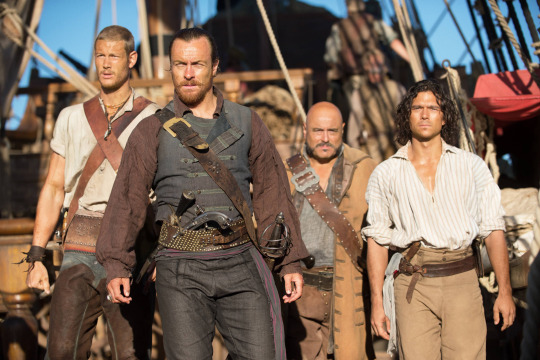
Here’s Why Everyone Is Talking About A Pirate Drama That Ended In 2017
Black Sails has been described as Game of Thrones with pirates
If Black Sails kicked off in 2020 instead of 2014, it certainly would have thrown fuel on the raging fire that was TikTok’s sea shanty obsession. The reality is that this TV series aired on Starz from 2014 for four seasons, coming to a close in 2017. So why is everyone talking about it now, a decade after it began?
Black Sails is coming to Netflix very soon, triggering its fans to emerge from the woodwork and promote the show online. ‘I am SO excited for people who’ll be watching this show for the first time,’ one user wrote, with many others recommending the series to fans of Game of Thrones. With House of the Dragon still a few months away, here’s why you should tune into Black Sails this month.
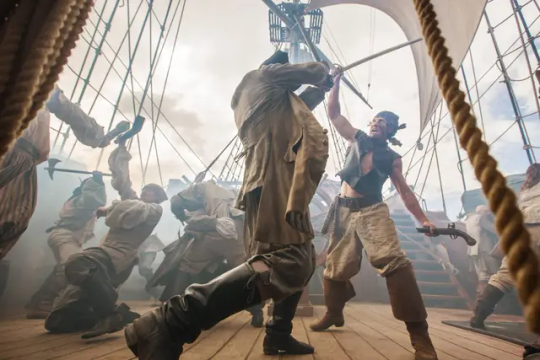
New To Netflix: Black Sails
What Is Black Sails About?
Black Sails transports us back to 1715 – aka the Golden Age of Piracy. Set in New Providence, an island in the Bahamas, we meet the feared Captain Flint (Toby Stephens) who brings a new younger crew member into the fold (‘Long’ John Silver, played by Luke Arnold) as his crew continues to fight for survival and negotiate their space on the island.
Is Black Sails Based On A Book?
Black Sails was written as a prequel to Robert Louis Stevenson’s classic novel, Treasure Island (1883).
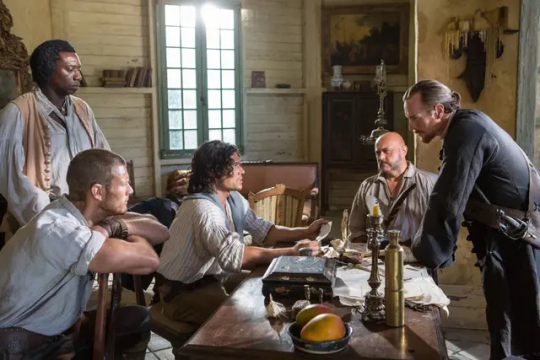
Is It Based On A True Story?
While Black Sails isn’t based on a true story, it does trace real events. The first season focuses on the hunt for the Spanish treasure galleon Urca de Lima, a real ship that sank in 1715 near Fort Pierce in Florida (where it still lies). Season two traces the fallout of Urca de Lima’s treasure being stranded in Florida, strictly guarded by Spanish soldiers while pirates prowl the shores. The subsequent third and fourth seasons then look at the war for the control of New Providence between the pirates and the British Empire – a la Pirates of the Caribbean.
Likewise, some of the characters are based on real people. Real pirates fictionalised in the show include:
Blackbeard (Ray Stevenson)
Anne Bonny (Clara Paget)
Benjamin Hornigold (Hakeem Kae-Kazim)
Jack Rackham (Toby Schmitz)
Charles Vane (Zach McGowan)
Ned Low (Tadhg Murphy)
Israel Hands (David Wilmot)
Meanwhile, Captain Woodes Rogers (Luke Roberts) – who represents the British Empire in seasons three and four – is based on a real English sea captain and slave trader, and subsequently the first Royal Governor of the Bahamas.
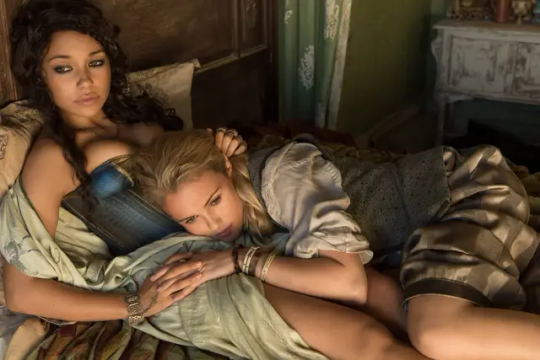
Was Captain Flint A Real Pirate?
Captain Flint is a fictional character who was first created by Robert Louis Stevenson in Treasure Island. He has since appeared in multiple works of fiction, including A. D. Howden Smith’s Porto Bello Gold (1924), John Drake’s Flint and Silver (2008), Pieces of Eight (2009) and Skull and Bones (2010), and J. M. Barrie’s Peter and Wendy (1904).
Where Was Black Sails Filmed?
Black Sails was filmed in Cape Town, South Africa, mainly inside at Cape Town Film Studio. Because the real city is so different today than it was in the 1700s, Nassau – the capital of the Bahamas, located on New Providence island – was built from scratch in a studio over a period of four months, as were two large water tanks to house the series’ two ships. Some scenes were filmed outside in and around Cape Town when new terrain was required, but most of the series was filmed on set.
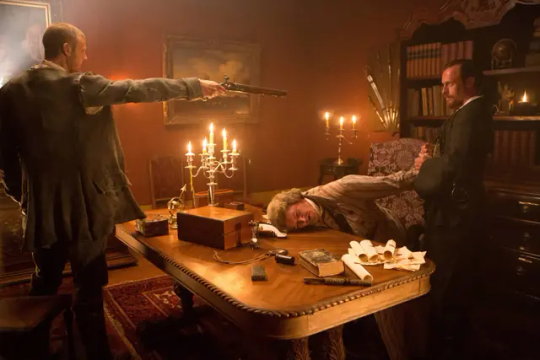
The Cast
The cast of Black Sails is incredibly large, but key characters to know include:
Toby Stephens as James McGraw/Captain Flint
Hannah New as Eleanor Guthrie
Luke Arnold as ‘Long’ John Silver
Jessica Parker Kennedy as Max
Tom Hopper as William ‘Billy Bones’ Manderly
Zach McGowan as Charles Vane
Toby Schmitz as Jack Rackham
Clara Paget as Anne Bonny
Mark Ryan as Hal Gates
Hakeem Kae-Kazim as Mr. Scott
Sean Cameron Michael as Richard Guthrie
Louise Barnes as Miranda Hamilton/Barlow
Rupert Penry-Jones as Thomas Hamilton
Luke Roberts as Woodes Rogers
Ray Stevenson as Edward Teach
David Wilmot as Israel Hands
Harriet Walter as Marion Guthrie
The Trailer
Interested? Here’s the trailer for a taste of the action.
youtube
WATCH
All episodes of Black Sails are streaming on Netflix from 17 April 2024.
Source: Country & Town House
#black sails#black sails on netflix#luke arnold#tom hoppers#jessica parker kennedy#clara paget#toby schmitz#zach mcgowan#luke robert jr#hannah new#hakim kae kazim#louise barnes#nick boraine#rupert penry jones#ray stevenson#david wilmot#sean cameron michael#Youtube
88 notes
·
View notes
Video
instagram
#2017#tom scharpling#gary the squirrel#julia rydholm#josh kantor#j penry#the studio#i believe in father christmas#greg lake
2 notes
·
View notes
Photo


#Black Sails#james flint#james mcgraw#toby stephens#Capitão J. Flint#Thomas Hamilton#rupert penry-jones#BS#Starz#tv shows#black sails edit
138 notes
·
View notes
Text
Whumpees (actors)
All the actors on this blog (so far):
Search for the name or use this link and add the name you're looking for https://whump-collector.tumblr.com/tagged/
I use the tag compilation for posts with several whumpees.
a: aaron ashmore - aaron tveit - adam palsson - adarsh gourav - aidan turner - alex o'loughlin - alexander dreymon - ali tarik findik - allison scagliotti - andreas pietschmann - andrew j. west - andrew scott - anson mount
b: ben barnes - ben hardy - ben levin - ben mckenzie - ben wishaw - benedict cumberbatch - brian austin green - burc kümbetlioglu
c: callum turner - channing tatum - charlie cox - charlie hunnam - charlie vickers - chris hemsworth - chris pine - chris pratt - christian bale - christipher egan - cillian murphy - colin farrell - colin morgan - colin o'donoghue
d: dan lewis - daniel br��hl - daniel craig - daniel sharman - david boreanaz - david dastmalchian - david duchovny - david tennant - david wenham - diego klattenhoff - diego luna - dirk benedict - dominic cooper - drake rodger
e: eamon farren - engin akyürek - eric christian olsen - ethan hawke - ewan mcgregor
f: freddie stroma - freddy carter
g: gael garcia bernal - gavin drea - giacomo gianniotti - guy pearce
h: halil ibrahim ceyhan - harold perrineau - henry cavill - henry golding - hisham tawfiq - hugh dancy - hunter doohan
i: iain de caestecker - ian somerhalder - iko uwais - ioan gruffudd
j: jack bannon - jack davenport - jack martin - jack quaid - jake mclaughlin - james mcavoy - james spader - james wolk - jared padalecki - jason isaacs - jay hernandez - jd pardo - jenna ortega - jensen ackles - jeremy allen white - jim sturgess - joe flanigan - joe gilgun - joe keery - joel kinnaman - joey batey - john cho - john cusack - john reardon - jon bernthal - jonas nay - jonny harris - jordan bridges - joshua jackson - jude law - julian morris
k: karl urban - keegan allen - kevin alejandro - kiefer sutherland - kit harington
l: lee pace - liam hemsworth - louis hofmann - lucas till - luke evans - luke mitchell
m: mads mikkelsen - mark hamill - mark waschke - markus brandl - martin henderson - martin shaw - martin wallström - matt barr - matt bomer - matt czuchry - matt lanter - matt smith - max thieriot - megan boone - mel gibson - michael fassbender - michael hurst - michael shanks - michael sheen - michael weatherly - mike farrell - milos bikovic
n: nathan fillion - nathan parsons - ncuti gatwa - nicholas galitzine - nikolaj coster waldau - noah centineo
o: oliver rayon - oscar isaac
p: pablo schreiber - paul bettany - paul hassall - pedro pascal - pierce brosnan - pio marmai
r: raj yadav - rami malek - renee o'connor - richard armitage - richard harmon - richard madden - rish shah - robert downey jr - robert james-collier - robert kazinsky - robin lord taylor - rodger corser - rufus sewell - rupert evans - rupert penry jones - russell crowe - ryan guzman - ryan kelley - ryan reynolds
s: sabin tambrea - sam heughan - sam riley - santiago cabrera - scott caan - sean bean - sebastian stan - shawn ashmore - simon baker - stanley tucci - stephen amell - steve burton
t: thomas elms - thomas gibson - tim dekay - tim roth - timothy granaderos - tobey maguire - tolga saritas - tom austen - tom ellis - tom hiddleston - tom holland - tom payne - tom riley - tom sturridge - tomer capone - torrance coombs
v: viggo mortensen - vladimir burlakov
w: william shatner
y: yon gonzalez
z: zach mcgowan - zeeko za
66 notes
·
View notes
Photo










Here’s which Cobra members should be in GI Joe 3: Pilou Asbaek Richard Armitage or Aidan Turner as Serpentor. Nazanin Boniadi or Lena Headey as Zarana. Gilles Marini as Archibald Monev / Doctor Venom. Rupert Penry Jones or Dan Feuerriegel as Sebastian Bludd / Major Bludd. Luke Treadaway & Harry Treadaway as the Crimson Twins Tomax and Xamot. Eddie J. Fernandez as Scrap-Iron. Jeff Branson as Croc Master . Toby Stephens as Voltar. Tim Griffin as Copperhead. Ari Millen as Overkill.
#G.I. Joe#Cobra Command#Serpentor#Pilou Asbaek#Richard Armitage#Aidan Turner#Zarana#Nazanin Boniadi#Lena Headey#Doctor Venom#Gillies Marini#Major Bludd#Rupert Penry Jones#Dan Feuerriegel#Tomax and Xamot#Luke Treadaway#Harry Treadaway#ScrapIron#Eddie J. Fernandez#Croc Master#Jeff Branson#Voltar#Toby Stephens#Copperhead#Tim Griffin#Overkill#Ari Millen#Fancast#G.I. Joe: Ever Vigilant
7 notes
·
View notes
Photo

Weird Westerns: Race, Gender, Genre (Postwestern Horizons), edited by Kerry Fine, Michael K. Johnson, Rebecca M. Lush, and Sara L. Spurgeon, University of Nebraska Press, 2020. Cover art by James Rinere, info: nebraskapress.unl.edu.
Weird Westerns is an exploration of the hybrid western genre—an increasingly popular and visible form that mixes western themes, iconography, settings, and conventions with elements drawn from other genres, such as science fiction, horror, and fantasy. Despite frequent declarations of the western’s death, the genre is now defined in part by its zombie-like ability to survive in American popular culture in weird, reanimated, and reassembled forms. The essays in Weird Westerns analyze a wide range of texts, including those by Native American authors Stephen Graham Jones (Blackfeet) and William Sanders (Cherokee); the cult television series Firefly and The Walking Dead; the mainstream feature films Suicide Squad and Django Unchained; the avant-garde and bizarre fiction of Joe R. Lansdale; the tabletop roleplaying game Deadlands: The Weird West; and the comic book series Wynonna Earp. The essays explore how these weird westerns challenge conventional representations by destabilizing or subverting the centrality of the heterosexual, white, male hero but also often surprisingly reinforce existing paradigms in their inability to imagine an existence outside of colonial frameworks.
Contents: Introduction: Westworld(s): Race, Gender, Genre in the Weird Western – Michael K. Johnson, Rebecca M. Lush, and Sara L. Spurgeon Part 1. The Weird West, Past and Present 1. Attack of the Monstrous Vegetable: Bret Harte’s Pioneer Nightmare and “Miscegenation” Dream – Tara Penry 2. Strange Country: Sexuality and the Feminine in Robert Coover’s Ghost Town – Eric Meljac and Alex Hunt 3. A Selective History: Identity and Identification in Deadlands – Nicholas William Moll Part 2. Native Reclamations and Representations 4. Mongrel Transmotion: The Werewolf and the Were/Wear/Where-West in Stephen Graham Jones’s Mongrels – Joshua T. Anderson 5. Indianizing the Western: Semiotic Tricksterism in William Sanders’s Journey to Fusang – Sara L. Spurgeon 6. Magnificence and Metas in Professional Westerns – Domino Renee Perez Part 3. Surrogate indians and Other Indigenous Metaphors 7. Defamiliarizing the Western on the Extraterrestrial Frontier: Jonathan Lethem’s Girl in Landscape – Johannes Fehrle 8. Shining the Light of Civilization: The Savage Other of the Frontier in Firefly and Serenity – Meredith Harvey 9. Racial Metaphors and Vanishing indians in Wynonna Earp, Buffy the Vampire Slayer, and Emma Bull’s Territory – Rebecca M. Lush Part 4. The African American Presence in the Weird Western 10. The Mad Black Woman in Stephen King’s The Dark Tower – Jacob Burg 11. Uncle Tom’s Cabin Showdown: Stowe, Tarantino, and the Minstrelsy of the Weird West – Joshua D. Smith 12. Race and Gender in the Time Travel Western – Michael K. Johnson Part 5. The Undead in the Weird Western 13. Go West, Old Man: Or, Buffalo Bill and the “Yellow Peril” in Zeppelins West – Cynthia J. Miller and A. Bowdoin Van Riper 14. amc’s The Walking Dead and the Restructuring of Gender and Race on the Neofrontier – Scott Pearce Afterword: This Is (Not) the End – Stephen Graham Jones Contributors Index
#book#essay#weird essay#horror essay#postwestern#weird western#horror western#western fantasy#western
23 notes
·
View notes
Text
‘WE NEED A LITTLE CHRISTMAS’ MARATHON OF ‘COUNTDOWN TO CHRISTMAS’MOVIES RETURNS TO HALLMARK CHANNEL FRIDAY, MARCH 27 – MONDAY, MARCH 30
STUDIO CITY, CA – March 26, 2020 – Hallmark Channel is giving viewers more of what they asked for with another weekend of ‘We Need a Little Christmas,’ a special marathon featuring “Countdown to Christmas” movies, Friday, March 27, through Monday, March 30.
The Hallmark Channel premiere of “Just My Type,” on Saturday, March 28, as well as new episodes of “When Calls the Heart” and “When Hope Calls” on Sunday, March 29, will air at their originally scheduled times.
“Countdown to Christmas” movies starring fan favorites Candace Cameron Bure, Lacey Chabert, Holly Robinson Peete, Cameron Mathison, Alison Sweeney, Danica McKellar, Andrew Walker, Jill Wagner, Wes Brown and more will let viewers cozy-up at home and watch the movies they asked for. The weekend kicks off with “Christmas in Evergreen: Letters to Santa” starring Wagner, Mark Deklin (“Designated Survivor”), Robinson Peete (“Morning Show Mysteries,” “Hanging with Mr. Cooper”), Barbara Niven (“Chesapeake Shores”), Andrew Francis (“Chesapeake Shores”), Rukiya Bernard (“One Winter Weekend”) and Ashley Williams (“The Jim Gaffigan Show”). The marathon continues throughout the weekend with movies including “Christmas at Holly Lodge,” “It’s Christmas, Eve,” “A Christmas Duet,” “A Christmas Wish,” and concludes with “Jingle All the Way” (Monday, March 30, 3:30 a.m. ET/PT).
The Full schedule appears below:
FRIDAY, MARCH 27th
12:00 p.m. ET/PT: “Christmas in Evergreen: Letters to Santa” Stars: Jill Wagner (“Pearl in Paradise,” “Teen Wolf”), Mark Deklin (“Designated Survivor”), Holly Robinson Peete (“Meet the Peetes,” “Hanging with Mr. Cooper”), Barbara Niven (“Chesapeake Shores”), Andrew Francis (“Chesapeake Shores”), Rukiya Bernard (“One Winter Weekend”) and Ashley Williams (“The Jim Gaffigan Show”)
2:00 p.m. ET/PT: “The Mistletoe Promise” Stars: Jaime King (“Harts of Dixie”) and Luke Macfarlane (“Killjoys”)
4:00 p.m. ET/PT: “Christmas at Holly Lodge” Stars: Alison Sweeney (“Days of our Lives,” “The Biggest Loser”), Jordan Bridges (J. Edgar, Mona Lisa Smile) and Sheryl Lee Ralph (“Instant Mom,” “Ray Donovan”)
6:00 p.m. ET/PT: “Picture a Perfect Christmas” Stars: Merritt Patterson (“The Royals”) and Jon Cor (“Shadowhunters”)
8:00 p.m. ET/PT: “Christmas Town” Stars: Candace Cameron Bure (“Fuller House”), Tim Rozon (“Schitt’s Creek”) and Beth Broderick (“Sharp Objects”)
10:00 p.m. ET/PT: “Write Before Christmas” Stars: Torrey DeVitto (“Chicago Med”), Chad Michael Murray (“Riverdale”), Grant Show (“Dynasty”), Lolita Davidovich (“How to Get Away with Murder”) and Drew Seeley (“Glory Daze”)
SATURDAY, MARCH 28th
12:00 a.m. ET/PT: “My Christmas Dream” Stars: Danica McKellar (“The Wonder Years”), David Haydn-Jones (“Bridal Wave,” “A Cookie Cutter Christmas”) and Deidre Hall (“Days of Our Lives”)
2:00 a.m. ET/PT: “12 Gifts of Christmas” Stars: Katrina Law (“Snow Bride”), Aaron O’Connell (“The Haves and Have Nots”) and Donna Mills (“Knots Landing”)
3:30 a.m. ET/PT: “It’s Christmas, Eve” Stars: LeAnn Rimes (Logan Lucky) and Tyler Hynes (“UnREAL,” “Saving Hope”)
5:00 a.m. ET/PT: “Christmas at the Palace” Stars: Merritt Patterson (“The Royals,” “The Christmas Cottage”), Andrew Cooper (“Royal Hearts,” “Damnation”) and Brittany Bristow (“Holiday Date”)
7:00 a.m. ET/PT: “A Christmas Duet” Stars: Chaley Rose (“Nashville,” “Code Black”) and Rome Flynn (“How to Get Away with Murder,” “The Haves and the Have Nots”)
9:00 a.m. ET/PT: “Christmas Connection” Stars: Brooke Burns (“The Chase,” “Gourmet Detective”) and Tom Everett Scott (“13 Reasons Why,” That Thing You Do!)
11:00 a.m. ET/PT: “Christmas at Pemberley Manor” Stars: Jessica Lowndes (“90210,” “Magical Christmas Ornaments”) and Michael Rady (“Timeless,” “Jane the Virgin”)
1:00 p.m. ET/PT: “Let it Snow” Stars: Candace Cameron Bure (“Fuller House”), Emmy® nominee Alan Thicke ("The L.A. Complex") and Jesse Hutch (“Debbie Macomber’s Cedar Cove”)
3:00 p.m. ET/PT: “Check Inn to Christmas” Stars: Rachel Boston (“A Ring by Spring”), Wes Brown (“True Blood”) and Richard Karn (“Home Improvement,” “Family Feud”)
5:00 p.m. ET/PT: “Christmas Getaway” Stars: Bridget Regan (“The Last Ship,” “Jane the Virgin”) and Travis Van Winkle (“The Last Ship,” Hart of Dixie”)
7:00 p.m. ET/PT: “Christmas Next Door” Stars: Jesse Metcalfe (“Chesapeake Shores”) and Fiona Gubelmann (“Wilfred”)
11:00 p.m. ET/PT: “Reunited at Christmas” Stars: Nikki DeLoach (“The Perfect Catch”) and Mike Faiola (“Yellowstone”)
SUNDAY, MARCH 29th
1:00 a.m. ET/PT: “A Wish for Christmas” Stars: – Lacey Chabert (Mean Girls, “Party of Five”) and Paul Greene (“When Calls the Heart”)
3:00 a.m. ET/PT: “A December Bride” Stars: Jessica Lowndes (“90210”) and Daniel Lissing (“When Calls the Heart”)
4:30 a.m. ET/PT: “Double Holiday” Stars: Carly Pope (“Suits”) and Kristoffer Polaha (“Condor”)
6:00 a.m. ET/PT: “Christmas Land” Stars: Nikki DeLoach (“Love Takes Flight”) and Luke Macfarlane (“Killjoys”)
8:00 a.m. ET/PT: “Crown for Christmas” Stars: Danica McKellar (“The Wonder Years”) and Rupert Penry-Jones (“Black Sails”)
10:00 a.m. ET/PT: “Merry & Bright” Stars: Jodie Sweetin (“Fuller House,” “Love Under the Rainbow”), Andrew Walker (“Bottled with Love,” “Love in Design”) and Sharon Lawrence (“NYPD Blue,” “Shameless”)
12:00 p.m. ET/PT: “With Love, Christmas” Stars: Emilie Ullerup (“Chesapeake Shores”) and Aaron O’Connell (“The Haves and the Have Nots”)
2:00 p.m. ET/PT: “The Mistletoe Secret” Stars: Kellie Pickler (“Pickler & Ben,” “Wedding at Graceland”), Tyler Hynes (“UnREAL”) and Patrick Duffy (“Dallas,” “Step by Step”)
4:00 p.m. ET/PT: “The Christmas Club” Stars: Elizabeth Mitchell (“The Expanse”) and Cameron Mathison (“A Summer to Remember”)
6:00 p.m. ET/PT: “Christmas Under Wraps” Stars: Candace Cameron Bure (“Fuller House”), David O’Donnell (“12 Wishes of Christmas”), Brian Doyle-Murray (“The Middle”) and Robert Pine (“Frozen”)
MONDAY, MARCH 30th
12:00 a.m. ET/PT: “The Nine Lives of Christmas” Stars: Brandon Routh (“Arrow”) and Kimberley Sustad (“A Bride for Christmas”) 2:00 a.m. ET/PT: “Welcome to Christmas” Stars: Eric Mabius (“Signed, Sealed, Delivered,” “Ugly Betty”) and Jennifer Finnigan (“Salvation”)
4:00 a.m. ET/PT: “Jingle Around the Clock” Stars: Brooke Nevin (“Chicago Hope,” “The Christmas Cure”), Michael Cassidy (“The OC”)
LINK HERE
#we need a little christmas marathon#press release#news#link#hallmark movies#hallmark channel#countdown to christmas
2 notes
·
View notes
Text
Is the unanimous SCOTUS ruling in Briggs notably kind to the "evolving standards" approach to the Eighth Amendment?
I noted in this post the Supreme Court's unanimous ruling this morning in US v. Briggs, No. 19-108 (S. Ct. Dec. 10, 2020) (available here), which fundamentally concerned an issue of statutory interpretation. But the Eighth Amendment was part of the fabric of the statutory debate, and I was struck by how the opinion by Justice Alito for the full Court — save Justice Barrett, who was not yet on the Court by the time of oral argument — discussed how the Eighth Amendment is interpreted in these two passages:
This Court has held that the Eighth Amendment incorporates “‘evolving standards of decency.’” Kennedy v. Louisiana, 554 U.S. 407, 419 (2008) (quoting Trop v. Dulles, 356 U. S. 86, 101 (1958) (plurality opinion); emphasis added). Thus, even if we were to hold that rape could be punished by death in the military context, the evolving-standards test could later lead to a different result and thus a different statute of limitations at some point in the future. Such evolution has been held to have occurred on a number of past occasions. Compare Atkins v. Virginia, 536 U. S. 304, 321 (2002) (Eighth Amendment prohibits death penalty for defendant described as mentally retarded), with Penry v. Lynaugh, 492 U.S. 302, 340 (1989) (Eighth Amendment permits death penalty for such a defendant); compare also Roper v. Simmons, 543 U.S. 551, 574–575 (2005) (Eighth Amendment prohibits death penalty for crime committed by person under 18 years of age), with Stanford v. Kentucky, 492 U. S. 361, 380 (1989) (Eighth Amendment permits death penalty for defendants who are at least 16 years of age)....
As noted, in deciding whether the Eighth Amendment permits a death sentence for a particular category of offenses or offenders, the Court has looked to evolving societal standards of decency and has also rendered its own independent judgment about whether a death sentence would aptly serve the recognized purposes of criminal punishment in certain categories of cases. See Kennedy, 554 U.S., at 419–421, 441–446; Roper, 543 U.S., at 561, 571–575; Atkins, 536 U.S., at 318–321. Some Justices have eschewed aspects of those approaches and have looked instead to the original understanding of the Eighth Amendment. See, e.g., Graham v. Florida, 560 U.S. 48, 99–102 (2010) (THOMAS, J., dissenting); Atkins, 536 U. S., at 348–349 (Scalia, J., dissenting); Thompson v. Oklahoma, 487 U.S. 815, 864, 872–873 (1988) (same); cf. Glossip v. Gross, 576 U.S. 863, 894, 898–899 (2015) (Scalia, J., concurring). But under either method, the inquiry is quite different from the one that a lawmaker might make in fixing a statute of limitations.
This accounting of Eighth Amendment interpretation in Briggs is certainly meant to be just descriptive, as it notes how "the Court has" approached Eighth Amendment interpretation and how some Justices " have eschewed aspects of those approaches and have looked instead to the original understanding of the Eighth Amendment." Nevertheless, this discussion of the "evolving-standards test" still struck me as fairly "kind" to a "living Constitution" vision of the Eighth Amendment in a unanimous Court ruling circa 2020. Though I am likely reading way too much into these passages, I will be eager in future writings to have a fresh 2020 citation for the proposition that the Supreme Court has indicated that courts are look "to evolving societal standards of decency" when interpreting the Eighth Amendment. United States v. Biggs, No. 19-108, slip op. at 8 (S. Ct. Dec. 10, 2020). And, I will also like to be able to say that, as the Supreme Court has clearly explained , "this evolving-standards test could later lead to a different result" under the Eighth Amendment even when a punishment has previous been upheld as constitutional. Id. at slip op. 6-7.
from RSSMix.com Mix ID 8247011 https://sentencing.typepad.com/sentencing_law_and_policy/2020/12/is-the-unanimous-scotus-ruling-in-briggs-notably-kind-to-the-evolving-standards-approach-to-the-eigh.html via http://www.rssmix.com/
0 notes
Text
Littwin: Because it’s 2020, when anything can and will happen, Lauren Boebert’s stunning win seems like a natural
#easytake🏆
more news https://northdenvernews.com
The easy take — which, strangely, is often the right take — on Lauren Boebert’s stunning upset of Rep. Scott Tipton in the Republican 3rd Congressional District primary is that the Colorado GOP, already on life support, is now trying to commit suicide.
It’s an understatement, actually, to call Boebert’s win stunning. According to those who have done the research (h/t Ernest Luning), Tipton — scandal-free, supported by Trump, votes 95% party line, a five-term incumbent — was the first such incumbent to lose in a Colorado primary in, uh, 48 years. That’s a lot of years. It’s 15 more years than Boebert has been on earth.
And then when the news broke that Boebert had had some nice things to say about the QAnon conspiracy — which is so wacky that Alex Jones must wish he had invented it — the first thing that came to my mind was Christine O’Donnell, who had upset the establishment choice in Delaware in 2010, and later had to run an ad saying, “I am not a witch.” She cost Republicans a sure Senate seat, losing by 19 points.
Mike Littwin
Republican strategist Josh Penry had another Republican in mind. “To win,” he said of Boebert, “she has to be more Joni Ernst and less Sarah Palin. She needs to be less ideological and run more as the rugged outsider, which she can do.”
It’s difficult to know what to make of Boebert other than she fits perfectly into Trump World. All I knew about her was that she was a 33-year-old newbie who had splashed her way into national headlines by publicly challenging Beto O’Rourke on guns at an Aurora O’Rourke rally. She answered his “hell yes,” he’d take away people’s AR-15s and similar guns with her “hell no.” And I had learned that she owned a restaurant called Shooters Grill where the wait staff openly carry guns, and, of course, that she’s always packing, too. And that she had won even more anti-establishment headlines by opening her restaurant early in defiance of a statewide ban.
And in her stunning win, with very little money and very little establishment support, she had used her last TV ad, running in Pueblo and Grand Junction, to compare conservative Tipton to AOC — progressive icon Rep.Alexandria Ocasio-Cortez — saying that he was “teaming up with AOC and her Squad.” Tipton had supported a, uh, radical bill that would allow coronavirus funds to go to cities with populations under 500,000, meaning every city in the 3rd CD. The charge may have been ridiculous, but it worked.
In other words, she was a Trump acolyte in waiting, whether Trump knew it or not. They’re already post-primary pals, particularly after Boebert, who met up with the Trump team at Mount Rushmore, said the only thing she’d change about the monument was to add Trump’s likeness. You can also see that fits neatly into Colorado GOP chair Ken Buck’s luckless version of the party. But if you’re a Democratic strategist, she’s something else altogether — an opportunity to win back the district. It’s not impossible. Democrat John Salazar, Ken’s brother, represented the 3rd CD from 2005 to 2011.
But give Boebert credit. She won the spotlight. She got attention. And it was no wonder that people call her “media-savvy.” And so she pulled off a huge upset.
Get Mike’s columns early! Become a Colorado Sun member for an exclusive Mike Littwin newsletter and support local journalism. Click here to join.
And not just an upset. Boebert won nearly 55% of the vote. Staggering.
Cole Wist, the former state legislator who grew up in the 3rd CD, says he thinks Boebert is a perfect fit in the district. “When you ask if she’s a problem for the Republican Party,” he said, “the most important metric is whether she can win. I think she can, and I think she reflects the district very well.”
“She’s easy to dismiss, but those who dismiss her do so at their own peril,” Wist added.
Tipton has apparently now learned of that peril. But 2020 is no ordinary time to be running for anything. As Penry points out, it’s not just Trump who makes things different in Colorado. We’re solidly in the vote-by-mail era, in the primaries-open-to-unaffiliated-voters era. And in the 3rd CD, Penry notes, the roster of unaffiliated voters has grown from 36% of the electorate in 2014 to nearly 40% now.
READ: Colorado Sun opinion columnists.
“The system has changed,” Penry says. “The mail ballot and opening up the primaries allows more people to compete. And I think that with open primaries there are fewer people wedded to the red-blue BS. I think maybe the perception about Scott was like the Republican majority leader (Eric Cantor) who lost the primary in Virginia — a feeling that he maybe wasn’t as present as he should be.”
Boebert is present, but it may be possible to be too present as she takes on Democrat Diane Mitsch Bush, who lost to Tipton in 2018 by eight points. Running on guns is probably a winner in the district. But Boebert is now having to deny she’s a Q supporter. If you’re not up on your way-way-way-way-out-there right wing conspiracies, this is the one in which Donald Trump is secretly doing battle with an international child-trafficking ring led by liberal politicians, Hollywood types and, of course, George Soros. It’s like Pizza-gate on steroids. To believe in this, you have to be either appallingly uninformed or at least slightly insane. Or both.
Boebert had done an interview with a Q-friendly web site, and if you read her quotes closely, it sounds like she may not have actually known what Q is, but thought that supporting Q was what an up-and-coming, Trump-supporting, gun-toting, right winger should do.
What she said was this: “I hope that this is real,” adding, “It only means America is getting stronger and better, and people are returning to conservative values and that’s what I am for.”
I don’t know what she actually thinks. But I do know her problem is that it will be difficult to unsay what she did say. I assume Bush and her supporters will be reminding voters of that comment from now until November.
Already registered? Log in here to hide these messages.
Stay on top of it all.
Let us bring Colorado’s best journalism to you. Get our free newsletters.
UNDERWRITTEN BY TOBACCO-FREE KIDS ACTION FUND
OUR UNDERWRITERS SUPPORT JOURNALISM. BECOME ONE.
The Cook Political Report looked at the race and moved it from Solid Republican to Likely Republican. But it’s more complicated than that. As matters stand today, Trump would lose Colorado in a possible landslide. Cory Gardner is trying desperately to both shake Trump while also embracing him. It’s a trick that even Gardner may not be able to master. John Hickenlooper is thought to be 10 points ahead of Gardner. And, as Republican strategists tell me, if Gardner can’t close the gap by Labor Day, there’s a great chance national Republicans, who now suddenly have so many Senate seats to defend, could write off Colorado.
Who knows? What we do know is that every Democrat in Colorado will be running against Trump — and that the way to bet is that most will win by doing so. And now, with a Trump sound-alike running in the 3rd, it is no conspiracy theory to believe that it has become the only competitive U.S. House district in the state.
Mike Littwin has been a columnist for too many years to count. He has covered Dr. J, four presidential inaugurations, six national conventions and countless brain-numbing speeches in the New Hampshire and Iowa snow.
The Colorado Sun is a nonpartisan news organization, and the opinions of columnists and editorial writers do not reflect the opinions of the newsroom. Read our ethics policy for more on The Sun’s opinion policy and submit columns, suggested writers and more to [email protected].
Our articles are free to read, but not free to report
Support local journalism around the state. Become a member of The Colorado Sun today!
$5/month
$20/month
$100/month
One-time Contribution
The latest from The Sun
Littwin: Because it’s 2020, when anything can and will happen, Lauren Boebert’s stunning win seems like a natural
$1 loans? $10 million for a nail salon? Colorado’s federal coronavirus loan data has some eye-popping errors
Colorado may have missed a deadline to plan for reducing greenhouse gasses. Now the state faces a lawsuit.
How a new community of Black artists was born out of Denver’s police brutality protests
You’ll be seeing at least $19 million worth of John Hickenlooper and Cory Gardner on TV before Election Day
from https://ift.tt/3fOlLiB https://ift.tt/2Z7AHSw
0 notes
Text
Excursie Media werd het kijken van documentaires van Medialogica
Ruben en Julian - Heel Holland zoekt: Om niet gelijk weer aan de coronacrisis te denken, heb ik eerst een documentaire gekeken over Ruben en Julian. Deze twee jongetjes zijn vermist geraakt en vermoord door hun vader in mei 2013. Ik koos het werkveld media omdat ik het heel interessant vind hoe het zich ontwikkelt, en ik had toen voor het eerst in de gaten hoe de media zich ontwikkelde. Ik kan me nog herinneren wat voor impact deze vermissing had en ik vond het best wel akelig. Wat ik geleerd heb in de documentaire, is dat de media naar mijn idee niet helemaal oké is omgegaan met de moeder van de twee jongens. Haar adres is vrijgegeven door Ivar Penris die werkt bij het AD en Jeugdzorg heeft een document geplaatst over de zaak, allemaal omdat het zo groot in de media werd. Ik maakte pas echt kennis met fake news toen Donald Trump in 2016 president werd, maar ook hier was dat al een beetje het geval. Zo werd namelijk aangegeven dat er op verschillende plekken het zoeken in scene werd gezet, zodat de media wat te filmen had. Het fake news en de privacy zijn twee dingen die terugkomen in de documentaire en nog steeds een rol spelen in de ontwikkelingen van de media.
Corona - Ziektebeeld: Ik ben deze aflevering van medialogica gaan kijken, omdat ik al het nieuws rondom Corona nogal vaag vind, ik houd soms niet meer bij hoe de regels zich nou precies vormgeven. Maar ook omdat ik het zeker een hele interessante tijd vind en het een van de grootste uitdagingen is van de journalistiek. Het draaide in deze documentaire vooral om hoe het nieuws gebracht werd, zo had het begrip groepsimmuniteit meer nuance moeten krijgen. En wat voor verschillende dingen er bijvoorbeeld gezegd zijn over de sterftecijfers in de media, en dat daar sprake is van sterke speculatie. Het meest opvallende aan deze documentaire is dat de media een beetje in de hoek wordt gezet volgens journalisten. De trends en ontwikkelingen die je direct in de documentaire ziet is dat er bijvoorbeeld weer heel veel mensen televisie kijken, er keken zo’n zeven miljoen mensen naar de toespraak van Rutte. Maar ook dat we andere grote dingen links laten liggen, omdat bronnen wachten tot na de crisis en dit nu extreem speelt. Maar dat hierdoor de politiek en bijvoorbeeld ambtenaren zich volgens de journalisten in de documentaire achter de crisis schuilen. Trends die niet direct in de documentaire terugkwamen maar die ook een ding zijn, zijn complottheorieën. Doordat de media niet alles prijsgeeft en niet alles weet, is het gevolg dat mensen in complottheorieën gaan geloven. Het mooiste aan de docu vond ik om te zien hoe de journalisten afwegingen maken in wat ze publiceren, om geen paniek te zaaien. Het gaat niet om het feit dat je de eerste bent, maar wat voor impact je hebt.
Het beeld wat deze twee documentaires mij hebben opgeleverd van het werkveld is dat je heel erg dedicated aan je beroep moet zijn. Je moet ergens voor willen gaan, het interessant vinden en het onderzoeken. Maar dat je ook afhankelijk bent van je bronnen en dat men ook in hun eigen belang denkt, en je dus lang niet alles vertelt. Het is niet bepaald iets nieuws voor me, maar ik vond het wel heel interessant om het duidelijk uit de mond van een journalist te horen komen. Zeker omdat dit werkveld heel breed is en nog altijd in ontwikkeling, blijf ik het leuk vinden om me erin te verdiepen.
Bronnen:
van de Reit, M & Otten, E (2018, 23 januari) Heel Holland zoekt [video] geraadpleegd op 21 mei 2020, van https://www.human.nl/medialogica/kijk/afleveringen/2018/aflevering-1.html
Versluis, J., Braam, M. & Kremers, Y. (2020, 19 mei) Ziektebeeld [video] geraadpleegd op 24 mei 2020, van https://www.human.nl/medialogica/kijk/afleveringen/2020/aflevering-1.html
0 notes
Text
The Killing of Rhonda Hinson Part 43

Rhonda Pruett and her husband, former Burke County Sheriff’s Department Detective James “Flash” Pruett.
Editor’s note: This is a continuation of a series about the Dec. 23, 1981, murder of Rhonda Hinson.
By LARRY J. GRIFFIN
Special Investigative Reporter
For The Record
Flash did so much for us on his own time. Bobby and I both believed that if he had been allowed to stay on the case, it would have been solved by now.—Judy Hinson
Shortly after the dawn of this Millennium and its prescient concern over a potential Y2K cataclysm, Detective James “Flash” Pruett was traveling back to Burke County from Raleigh during a Winter foothills snowfall. He had delivered a .270-caliber rifle to the SBI Lab to ascertain the feasibility of a connection to the killing of Rhonda Hinson.
In an SBI Laboratory Report, dated Friday Jan. 8, 1982, the bullet that killed the 19-year-old was adjudged to be “…consistent with a .30-caliber jacketed bullet with four lands and groves and a right-hand twist.” According to an unnamed respondent to the Remembering Rhonda Hinson Facebook Page, who is highly-experienced with firearms, “…The bullets that range from .300” to .309” are usually referred to as a 30 caliber. There are several dozen calibers that shoot a .30-caliber bullet, including several from the early 1900’s….”
But the .270-caliber projectile, designed by Winchester in 1923 and unveiled in 1925, is “actually a .270” diameter; so, it couldn’t be shot from a 30.06,” the unnamed source averred. Equally, the converse is true—a .270-caliber weapon could not reliably fire a .30-caliber round. So, the rhyme and reason for Detective Pruett’s ostensible superfluous trip to Raleigh remains elusive—even he thought as much.
“Flash never believed that rifle had a thing to do with Rhonda’s murder,” Judy Hinson said in a recent interview.
The chief investigator of the Hinson case was nearly home when it happened—a 70-car pile-up precipitated by a speeding motorist. In a recent interview with this writer, Rhonda Pruett described the accident that nearly claimed the life of her husband:
“A woman speeding in the snow hit Flash—who was at a dead stop, getting ready to [report] a wreck in front of him—breaking his seat and throwing him in the backseat at 60 MPH, knocking him into a passing lane, and spinning him around 180 degrees. A full-size pickup hit him on the driver’s side causing the battery to explode and acid [sprayed] all over Flash. Then another pickup truck hit him on the passenger door, and a tractor trailer hit him pinning [his car] against the guardrail.
The accident left the detective with damaged L-4 and L-5 vertebrae—the two lowest of the lumbar spine—that facilitate an array of functions, inclusive of upper body support and allowing trunk motion in sundry directions. Succinctly, the injury sustained required surgery to repair; however, surgical treatment was not immediately on the horizon for the detective. Supposedly questions arose relative to Worker’s Compensation, thereby delaying a surgical procedure in Chapel Hill.
“His worker’s compensation nurse was Wanda Pettigrew Penry,” Rhonda Pruett explained. “Wanda really advocated for him… [and] fought for Flash for several years.”
According to Detective Pruett, it was about a year or more after the accident that he was cleared for surgery and subsequent recuperation and rehabilitation. “He was in a ‘turtle shell’ for six-months,” Rhonda recalled.
It was during the months following the accident that Flash became aware of Sheriff John McDevitt’s predisposition to effect his dismissal from the department—first, perhaps, from his Worker’s Compensation advocate, Wanda Pettigrew Penry. “She would tell us how John was wanting to [be] rid of him, and she would try to talk John into keeping him,” Ms. Pruett recalled. “It was such a horrible time….”
Ironically, when John McDevitt was campaigning against the incumbent Richard Epley, seeking his first term as Burke County sheriff, Detective Pruett—along with others—worked diligently to get him elected. Among those who were active in the McDevitt campaign, according to the Pruetts, was Cheryl Bollinger [Shuffler], who served as a reporter for The News Herald and eventually authored a 2001 series entitled, Who Killed Rhonda Hinson. “We were good friends,” Flash acknowledged.
“We remember a campaign event on the Old Courthouse lawn—near the statue of the Confederate Soldier, I believe—and Flash was there with others from the department working to get John elected,” Rhonda recalled.
Understandably, the Pruetts expressed disappointment in McDevitt’s behavior in light of Flash’s commitment to his work and dedication to the Sheriff’s Department. “I was working in my office during the time after my accident; but, John thought I wasn’t useful because I wasn’t able to go out in the field to investigate,” Detective Pruett explained.
Even before the defining accident, Flash had encountered criticism from sundry colleagues relative to the amount of time he was devoting to seeking resolution for the Hinson case. “They said he was too close to the case,” Rhonda explained. “I mean he brought files home and review them at night; he spent hours investigating Rhonda’s case on his own time. Flash has a lot of compassion for victims and their families—then and now.”
The Hinsons were aware of Detective Pruett’s dedication to their daughter’s case and applaud his efforts to this very day. “Flash did so much for us on his own time,” Judy Hinson explained. Bobby and I both believe that if he had been allowed to stay on the case, it would have been solved by now.”
And they knew of the undeserved criticism leveled at the detective from time to time by other law enforcement officers. “We know that he was being criticized for spending so much time on Rhonda’s case; but—from our point of view—we were happy that somebody at the Sheriff’s Department was taking the time to solve her murder!” Judy Hinson emphatically stated.
Neither Detective Pruett nor his wife, Rhonda, recall exactly when the proverbial “ax fell.” But they do recall who delivered the news to Flash—Lee Turner. “He told me that I could either retire or resign—I believe Lee said it that way,” Flash recounted during an interview with this writer. “I asked if I could stay on and do any kind of task that was needed around the department. He refused saying, ‘We don’t need you anymore.’”
Certainly by September 2001, Detective James “Flash” Pruett was no longer the chief investigator of the Rhonda Hinson case. That responsibility was ceded to Sergeant Charlie Morris who was 10-years old when Rhonda was killed. In an interview with News Herald reporter Cheryl Bollinger [Shuffler], in September 2001, Sgt. Morris observed, “It’s amazing how many experienced investigators have studied this case from day one…and so far have come up empty.”
For the Hinsons the disappointment was two-fold: the loss of Detective Pruett and his indefatigable determination to solve the case and their disillusionment with Sheriff John McDevitt’s administration. “When he was running for sheriff, John told us that he would solve Rhonda’s case,” Judy Hinson averred. “He said he wanted another chance to ‘get it right this time.’”
On the Wednesday morning of Dec. 23, 1981, a young Sheriff’s Investigator John McDevitt was on the scene subsequent to the killing of Rhonda Hinson. Purportedly the first detective to work the case, John had the unenviable task of apprising her father and mother and brother that Rhonda had been shot to death.
In a Sunday Dec. 19, 1999, News Herald article—a year after being elected to his first term as Burke County Sheriff—McDevitt recalled the difficulty of delivering the news toher parents, almost 18-years after the killing of Rhonda Hinson:
“One of the worst things I have had to do in my…career is to go to Bobby and Judy’s house that night and tell them their daughter is dead….That night I never thought this case would go this long without being solved.”
And it was on the evening of Rhonda’s murder that the former Burke County Sheriff sat in Robbie Hinson’s room with Bobby, Judy, Steve Whisenant, and Albert Suttles and articulated his hypothesis relative to the identity of the shooter who ended the life of their 19-year-old daughter. According to the Hinsons, his pronouncement was tempered by a cautionary comment from the present Sheriff of Burke County, Steve Whisenant.
Moreover, in the aforementioned 1999 News Herald article—authored by Cheryl Moose [Bollinger Shuffler]—the then Sheriff McDevitt averred that his main goal was to get Rhonda’s family involved in the investigation. “We have opened our entire file to the Hinson family and we keep them informed on a regular basis.”
“That never happened,” Judy Hinson rejoined, when she was recently asked about the sheriff’s asseveration. “It has always been difficult to get information of any kind from law enforcement. We would call regularly to get updates on the investigation; sometimes we weren’t treated the best in the world. In fact, Bobby and I would draw straws to see who would make the call; we dreaded to hear what they would say back to us. And the entire case file has never been opened to us.”
Back in the Fall of 2019, the Hinsons encountered John McDevitt at a local restaurant in Morganton. During a brief conversation, Judy and Bobby encouraged him to talk with The Record relative to his investigation of their daughter’s case. “To me, he seemed open to talking and that he would think about it,” Ms. Hinson recalled. “He seemed very concern, almost to the point of tearing-up.”
And Mr. McDevitt also spoke of Detective Pruett. “John said he had to get rid of Flash because he didn’t think that he was able to do the job anymore.”
Subsequent to the chance-meeting at the restaurant, Judy Hinson sent a message to the former sheriff through Facebook, asking him to confirm the statement that he made relative to Rhonda’s killer in her son’s bedroom the evening of Dec. 23, 1981. In a response that somewhat surprised Ms. Hinson—especially given the recent encounter with him—John McDevitt joined a phalanx of current and former law enforcement officers who declined to discuss an unresolved 38-year-old murder case:
The response was: “I have been asked many times to become part of the conversation regarding this case. I will not comment or have an opinion regarding suspects, evidence or investigative techniques regarding this case, those would become public and affect either the investigation or possible prosecution in the future.”
But what did 25-year-old John McDevitt hypothesize that fateful evening over 38-years ago? The Hinsons clearly, unequivocally remember: “He said, ‘If you ask me, it was the boyfriend.’”
0 notes
Text
Best TV Series For Law Enthusiasts
Looking for a new law series to binge that isn’t created by Dick Wolf? Have you already binged your way through Law & Order, SVU, and Criminal Intent? Good news, there are countless shows out there that are focused around legal roles. Maybe you’re a law student looking for something to watch while you study for the bar or maybe you’re a lawyer looking for a new show to mutter “That’s not how it’s done!” while you watch.
Whether you’re a fan or a professional, here are ten of the best shows for law enthusiasts that you can binge tonight.
Better Call Saul (2015 – )
5 Seasons, 51 Episodes on Amazon Prime [IMDb 8.7/10] Cast: Bob Odenkirk, Jonathan Banks, Rhea Seehorn, Patrick Fabian, Michael Mando
If you loved Breaking Bad, then you’ll love this spin-off series. Six years before Saul Goodman (Bob Odenkirk) became the attorney of Walter White, he was a small-time attorney known as Jimmy McGill. He was a champion of low-income clients and an underdog among his peers. The series follows Jimmy as he works with the private eye Mike Ehrmantraut (Jonathan Banks) in Albuquerque, New Mexico.
Rake (2010 – 2018)
5 Seasons, 45 Episodes on Amazon Prime [IMDb 8.6/10] Cast: Richard Roxburgh, Matt Day, Kate Box, Caroline Brazier
Set in Australia, this series revolves around the Sydney criminal-defense barrister Cleaver Greene (Richard Roxburgh). He works on cases that most barristers would never touch because his clients are typically guilty of the heinous crimes they are being tried for. The character is largely based on a real-life barrister and author, Charles Waterstreet. While the series focuses heavily on the legal cases he’s handling, it also focuses on his own self-destructive personality which includes addiction and a myriad of problems with the women in his life.
Suits (2011 – 2019)
9 Seasons, 134 Episodes on Hulu [IMDb 8.5/10] Cast: Gabriel Macht, Rick Hoffman, Sarah Rafferty, Patrick J. Adams, Meghan Markle
Set at fictional New York City law firm the series follows Mike Ross (Patrick J. Adams), a talented college dropout, as he begins work as a law associate for Harvey Specter (Gabriel Macht) despite never attending law school. While the show focuses on the cases that Harvey and Mike work on together, the series became best known for the interpersonal relationships between the characters. The series finale was hailed as one of the most satisfying series finales in television history. Which is pretty steep praise.
Billions (2016 – )
5 Seasons, 51 Episodes on Showtime [IMDb 8.4/10] Cast: Paul Giamatti, Damian Lewis, Maggie Siff, Malin Åkerman
A “ripped from the headlines” series, Billions was inspired by the real-life investigations undertaken by Preet Bharara, the U.S. Attorney for the Southern District of New York from 2009 to 2017. The series focuses on hedge fund manager Bobby Axelrod (Damian Lewis) as he accumulates wealth and power in the financial world. His aggressive and illegal tactics lead the United States Attorney Chuck Rhoades (Paul Giamatti) to attempt to prosecute him. The series has a large ensemble cast, helping to interweave dynamic stories about law enforcement and private enterprise.
The Good Wife (2009 – 2016)
7 Seasons, 158 Episodes on Hulu [IMDb 8.3/10] Cast: Julianna Margulies, Matt Czuchry, Christine Baranski, Archie Panjabi
Alicia Florrick (Julianna Marguiles) has been a good wife to her husband (Chris Noth). When political corruption and a sex scandal lands her husband in jail, she returns to her career as a defense attorney, moving past the persona of a humiliated wife. The series has received critical acclaim for its storylines and was considered one of the best drama series on TV.
Silk (2011 – 2014)
3 Seasons, 18 Episodes on Amazon Prime and Hulu [IMDb 8/10] Cast: Maxine Peake, Rupert Penry-Jones, Neil Stuke, Theo Barklem-Biggs
The series is set around a group of barristers from a set of criminal law chambers in London. The story mostly follows the rivalry between Martha Costello (Maxine Peake) and Clive Reader (Rupert Penry-Jones). While it was mostly a courtroom drama, the creator wanted to also focus on the human drama behind the scenes, inspired by his own experiences as a former barrister.
American Crime Story (2016 – )
2 Seasons, 19 Episodes on Netflix [IMDb 8/10] Cast: Varies
Created by American Horror Story’s Ryan Murphy, the anthology series has so far covered two groundbreaking cases in American legal history. The first season covered the murder trial of O.J. Simpson, while the second covered the assassination of Gianni Versace. It’s a spectacular series filled with familiar faces. The upcoming season is set to cover the impeachment of President Bill Clinton.
The Practice (1997– 2004)
8 Seasons, 205 Episodes on Amazon Prime [IMDb 7.7/10] Cast: Steve Harris, Camryn Manheim, Michael Badalucco, Dylan McDermott
Bobby Donnell (Dylan McDermott) is a passionate lawyer and head of a struggling Boston law firm, whose instincts tell him that the most important cases aren’t about the money. The series revolves around Bobby, his receptionist Rebecca Washington (Lisa Gay Hamilton), and the junior attorneys with the law firm. This series led to the equally popular spin-off Boston Legal.
Bull (2016 – )
4 Seasons, 87 Episodes on Hulu [IMDb 7/10] Cast: Michael Weatherly, Freddy Rodriguez, Geneva Carr
The series follows the employees at Trial Analysis Corporation, a jury consulting firm headed by Dr. Jason Bull (Michael Weatherly), who is a psychologist and trial science expert. Bull uses his skills and those of his team not only to select the right jurors for his clients, but also to help his clients' lawyers decide which type of argument will win over jurors best. The series is inspired by television personality Dr. Phil who worked for a trial consulting firm.
Ally McBeal (1997 – 2002)
5 Seasons, 112 Episodes on Amazon Prime [IMDb 6.8/10] Cast: Calista Flockhart, Greg Germann, Jane Krakowski, Vonda Shepard
The series begins with Ally McBeal (Calista Flockhart) joining the firm co-owned by her law school classmate Richard Fish (Greg Germann) after leaving her previous job due to sexual harassment. Although the series is largely focused on the weekly court cases, the main plot of the first three seasons is centered around Ally working alongside her ex-boyfriend Billy Thomas (Gil Bellows) and his wife, and fellow lawyer, Georgia (Courtney Thorne-Smith). The series started off strong, but the last season, unfortunately, earned it a cancellation from Fox.
If this list didn't help you find something to binge tonight, at least Annalise Keating and her students are there for us. Did you see that series finale?
The post Best TV Series For Law Enthusiasts appeared first on Your Money Geek.
from Your Money Geek https://ift.tt/3bJ5tnM via IFTTT
1 note
·
View note
Text
5 Rural Retreats Worthy of a Detour
There’s a town in Virginia called Rural Retreat, just off the old Lee Highway in Wythe County. The population: 1,500, give or take.
As a concept, getting away from it all has broader appeal.
This fall, Canyon Ranch — a pioneer in wellness long before it was a marketing bonanza — will open a dedicated wellness retreat among the redwoods of Woodside, Calif., to help pilgrims find a way to “a full rebirth of mind, body, spirit, and soul,” according to the company.
The less ambitious might just want a long weekend of digital detox in an isolated spot (like the Nimmo Bay Resort and its nine waterside cabins in British Columbia, reachable by helicopter), or to take a pretty drive (north along the Merritt Parkway, say, where New York fades away into Connecticut) to see the leaves change.
Far from neighbors and close to nature, these five really rural retreats are worth a detour.
From the family who changed the gastro-landscape with Blackberry Farm, this 5,200-acre compound aims to bring the same bucolic chic to another corner of the Great Smoky Mountains. There’s a common lodge — albeit up to Relais & Chateaux standards — and an array of houses built with local materials. But the most remote accommodations are out by the Firetower. (Originally built as a lookout tower in the 1950s, it’s now the anchor for a bar and restaurant, with flagstone terraces and antler chandeliers.)
The six Watchman Cabins were inspired by a 19th-century dogtrot-style house used by generations who had farmed this land in Tennessee; three of them are made of wood salvaged from the original two-story building. Each structure has a wood-burning stove, a wall of windows and a private deck overlooking unspoiled mountain terrain, along with a gigantic bathtub — for soaking after an 80-minute “inspirational hike” led by the resort’s wellness team.
Blackberry Mountain; from $1,045 (including breakfast, dinner, and some activities); 1041 The Loop Road, Walland, Tenn.
A couple of Brooklynites escaped to the Catskills in 2017, found a shabby 1962 motor lodge with a central A-frame, converted it into a 10-room hotel and injected some serious style into a one-stoplight town.
To support friends and other small businesses, the designer Megan Pflug and her artist husband J. Penry outfitted the guest rooms with vintage pieces from nearby antique shops like Chipped Tarnished and Torn: felt-and-leather headboards by Moses Nadel (a pal from the Rhode Island School of Design); bedding by Red Land Cotton that they discovered in Rhinebeck (about 40 miles south); and toiletries custom-made for them by Village Common, an apothecary in Catskill (a 25-minute drive away).
The A-frame now houses a communal kitchen and lush living room, where velvet chairs, terra cotta jugs and a collection of National Geographic back issues (found in the attic, along with the snowmobile posters that hang in some rooms) complement the handsome stone fireplace. A restaurant and wine bar are due to open in January.
Woodhouse Lodge; from about $275 (including continental breakfast); 3807 County Route 26, Greenville, N.Y.
Opened earlier this year by the art-collecting hoteliers Alex and Carrie Vik, Puro Vik is collection of 22 glass houses set among tall trees on steep hills in Chile’s Millahue Valley. Unique interiors vary according to artists who have caught the Viks’ imagination — the 19th-century Japanese painter Hiroshige, for instance, and the American blown-glass sculptor Dale Chihuly. Each house has an open-air bathtub built for two, from which the Chilean landscape is the art on display.
The North American autumn is late spring, approaching summer in South America, so everything’s in bloom — from the vineyards to the Andes. Though secluded in nature, the enclave is in walking distance from Vik Chile, the titanium-hooded sister hotel that’s bursting with eccentric design.
Puro Vik; from about $1100 (including meals, some wine and activities like horseback riding and paintball); Millahue s/n San Vicente Tagua Tagua, VI, Chile.
The Pig — at Bridge Place
The sixth in the passel of The Pig hotels in the English countryside — the owners call them “restaurants with rooms” — this five-acre Kent property revolves around the storied Bridge Place, a 17th-century mansion that masqueraded as a nightclub and playground for British rock ’n’ roll royalty in the 1970s.
That acid washed history is celebrated in the rooms and crannies in the nimbly renovated house. (See the framed vintage set lists, gold-painted beds, deep sofas and the smoke stained mantel piece.)
But those who’d like to be less dazed and confused should book one of the seven Hop Pickers’ Huts, which are set on stilts along a boardwalk by a tributary of the Nailbourne river. Each reclaimed-rustic hut has a wood-burning stove, a deep bathtub in the bedroom and things growing in planters on the porch.
Meals at all the Pigs are made with ingredients they grow, cure, forage and raise themselves, or source locally. The immaculate kitchen gardens, open to guests year-round, are there to prove it.
The Pig — at Bridge Place; from about $160; Bourne Park Road, Bridge, Canterbury, CT4 5BH, U.K.
Zuri Zanzibar Hotel & Resort
Nestled on a pristine beach in a big lagoon, this isolated idyll prides itself on being far from civilization. (Don’t stress: there is internet access.)
Fifty-five thatched bungalows and villas are scattered amid a kind of tropical park on the Indian Ocean, far enough apart to give guests privacy to meditate undisturbed. There are outdoor showers (naturally), baobab trees (known as the tree of life in these parts, with a bulbous trunk and root-like branches) and an infinity pool set back from the sea.
The sight of dhows — traditional wooden sailboats — bobbing on the horizon at sunset might help even the confirmed cynic define “mindfulness.”
For those needing an extra push, see the wooden yoga pavilion. There is a bar that spills onto the palm-studded white sand beach; a dining room festooned with African baskets; and meals flavored with lemongrass, turmeric and cardamom plucked from the hotel’s elaborate spice garden.
Zuri Zanzibar Hotel & Resort; from about $495 (including breakfast and dinner); Kendwa Beach, Zanzibar, Tanzania.
52 PLACES AND MUCH, MUCH MORE Follow our 52 Places traveler, Sebastian Modak, on Instagram as he travels the world, and discover more Travel coverage by following us on Twitter and Facebook. And sign up for our Travel Dispatch newsletter: Each week you’ll receive tips on traveling smarter, stories on hot destinations and access to photos from all over the world.
Sahred From Source link Travel
from WordPress http://bit.ly/2WwIYMX via IFTTT
0 notes
Text
Justice Kennedy: He swung left on the death penalty but declined to swing for the fences
Carol S. Steiker is the Henry J. Friendly Professor of Law and Faculty Co-Director of the Criminal Justice Policy Program at Harvard Law School. Jordan M. Steiker is the Judge Robert M Parker Endowed Chair in Law and Director of the Capital Punishment Center at the University of Texas at Austin School of Law.
As in many other areas of the law, Justice Anthony Kennedy often provided the key fifth vote in death penalty cases during his three decades on the Supreme Court. Swinging to the right, Kennedy was a frequent supporter of restrictions on the availability of federal habeas review of capital cases, a skeptic of claims challenging the constitutionality of lethal injection and a relatively reliable vote against granting stays of execution in end-stage capital litigation. Kennedy will likely be remembered more, however, for his swings to the left, because he was the author of numerous opinions that broke new ground in the court’s Eighth Amendment jurisprudence. Most importantly, he was the primary architect of the court’s proportionality doctrine that led to exemptions from the death penalty for offenders with intellectual disability, juvenile offenders and nonhomicide offenders. He also ultimately joined decisions embracing a broad right of capital defendants to present and have fully considered all relevant mitigating evidence. Finally, he was the first justice to raise concerns about the extensive use of solitary confinement on death row. Overall, he solidified the court’s role in subjecting American death penalty practices to frequent and detailed — though not particularly intrusive — constitutional regulation. Kennedy never joined calls from members of the court (Justices Harry Blackmun, John Paul Stevens, Stephen Breyer and Ruth Bader Ginsburg) to reconsider the constitutionality of the death penalty as a punishment, but his jurisprudential glosses on the court’s proportionality doctrine arguably strengthen the case for judicial abolition.
Justice Kennedy in 2014 announces opinion on use of IQ scores in death sentence (Art Lien)
In 1989, at the end of his first full term on the court, Kennedy joined majority opinions rejecting claims that offenders with intellectual disability and juvenile offenders should be categorically exempt from capital punishment under the Eighth Amendment. Many observers thought that these decisions represented the end of the road for proportionality challenges to the scope of the death penalty. But starting in 2003, the court’s proportionality jurisprudence was expanded in a series of five key majority opinions, all of which were joined by Kennedy, and three of which he authored. The first, Atkins v. Virginia, authored by Stevens, overturned one of the 1989 decisions and declared the death penalty unconstitutional for offenders with intellectual disability. Stevens noted that 16 states had outlawed the execution of offenders with intellectual disability between 1989 and 2003 and explained that the “consistency of the direction of change” suggested an emerging consensus against the practice. Stevens also noted in a footnote that there was “additional evidence” of “a much broader social and professional consensus” in the views of expert organizations, representatives of diverse religious communities, the world community and the general public as reflected in polling data — a footnote upon which Justice Antonin Scalia bestowed a sarcastic “Prize for the Court’s Most Feeble Effort to fabricate ‘national consensus.’”
Two years later, Kennedy built on Stevens’ decision in Atkins when he authored the opinion for the court in Roper v. Simmons, overturning the second 1989 decision and declaring the death penalty unconstitutional for juvenile offenders. The number of states rejecting the practice was identical to that in Atkins, and Kennedy doubled down on the “world opinion” aspect of Stevens’ footnote, defending in ringing terms the relevance of international practice to constitutional decision-making: “It does not lessen our fidelity to the Constitution or our pride in its origins to acknowledge that the express affirmation of certain fundamental rights by other nations and peoples simply underscores the centrality of those same rights within our own heritage of freedom.”
In 2008, Kennedy wrote for the court in Kennedy v. Louisiana, applying the Atkins/Simmons framework to reject the death penalty for offenders convicted of raping children. Only a handful of states had authorized death sentences in such cases, so the legislative nose count was quite lopsided against the practice. However, Kennedy wrote the opinion more broadly than the case required in two ways. First, he made clear that the holding was not limited to the crime of child rape but rather extended to all crimes against individual persons short of murder. Second, Kennedy rested the court’s decision in part upon the troubling tensions within the court’s Eighth Amendment jurisprudence that had led Blackmun to call for the constitutional abolition of the death penalty in his dissent from denial of certiorari in Callins v. Collins shortly before his retirement. In Kennedy’s view, the court’s work was “not all together satisfactory” and thus called for “confining the instances in which capital punishment may be imposed.”
The final two proportionality cases broke down the wall separating the Eighth Amendment’s application in capital and noncapital cases. In 2010 in Graham v. Florida, Kennedy wrote for the court holding unconstitutional a sentence of life without parole (LWOP) for juvenile offenders convicted of nonhomicide crimes, applying the proportionality analysis that had been developed in Atkins, Simmons and Kennedy. Two years later in Miller v. Alabama, Justice Elena Kagan extended Kennedy’s analysis in Graham to preclude the mandatory imposition of an LWOP sentence on juvenile offenders convicted of homicide. Kagan built on Kennedy’s reasoning likening the sentence of juvenile LWOP to the death penalty, because it is an unusually severe penalty and the harshest one constitutionally available for juveniles. These juvenile LWOP cases further entrenched and expanded the court’s Eighth Amendment proportionality doctrine and for the first time suggested that it had application beyond the hermetic world of capital litigation.
In addition to crafting a substantial expansion of the court’s proportionality doctrine, Kennedy also provided a key vote to strengthen the pre-existing requirement that defendants be permitted to introduce all relevant mitigating evidence in capital sentencing. When Kennedy arrived in 1988, the court was just beginning to wrestle with the tension between the two most conspicuous pillars of its Eighth Amendment jurisprudence: the commitment to “guiding discretion” in sentencing proceedings to prevent arbitrariness, and the guarantee of “individualized sentencing” to ensure defendants could present (and have considered) all mitigating evidence that might support a sentence less than death. In 1989, the court held in Penry v. Lynaugh that the Texas death penalty statute that it had provisionally approved in 1976 was inadequate to facilitate consideration of a defendant’s evidence of childhood abuse and intellectual disability. Kennedy joined Scalia’s dissent, which argued that an expansive approach to individualized sentencing was inconsistent with the court’s commitment to narrowing discretion in capital cases. The stakes of the case were high because Texas was emerging as the most active executing state in the country, and the decision threatened to reverse scores of death verdicts obtained under the challenged statute. Kennedy wrote a crucial decision a few years later in Johnson v. Texas narrowing the Penry majority’s holding. He reasoned that states need only provide for “some” consideration of a defendant’s mitigating evidence and need not ensure that such evidence is considered in all of its dimensions. That decision allowed Texas to continue its leading role in executions.
In a series of subsequent decisions, Justice Sandra Day O’Connor urged a more robust reading of the individualization requirement, arguing that capital defendants should be afforded “full consideration” of their mitigating evidence. It wasn’t constitutional, in her view, to limit consideration of a defendant’s mitigating evidence to narrow questions concerning whether the defendant acted “deliberately” or whether the defendant would be dangerous in the future. Instead, states are required to provide a vehicle for jurors to consider mitigating evidence as it relates to a defendant’s reduced moral culpability. Kennedy ultimately changed course and provided the crucial fifth vote in two 2007 decisions, Brewer v. Quarterman and Abdul-Kabir v. Quarterman, upholding this broader individualization right. Without Kennedy’s change of heart, the court might well have resolved the tension between guidance and individualized sentencing by jettisoning the individualization requirement entirely.
Although Kennedy did not join others on the court in calling for a reconsideration of the death penalty as a punishment, he took a particular interest in a widespread aspect of its present administration — the housing of death-row inmates in solitary confinement. His interest in this issue was striking because it was not based on inmates challenging such incarceration in litigation before the court. During oral argument in 2015 in Davis v. Ayala, a case concerning race discrimination in jury selection, Kennedy seemingly out of the blue asked counsel about the nature of his client’s death-row confinement, including how long the inmate was allowed outside of his cell. Kennedy ultimately provided the crucial fifth vote to overturn relief for the inmate on the race-discrimination ground, stating that his rejection of the inmate’s claim was “unqualified.” But he wrote separately in Ayala to call attention to the fact that the inmate had spent more than 25 years in solitary confinement on death row. He emphasized specific details of that confinement, including that the inmate’s windowless cell that was no larger than a parking spot and that the inmate had little opportunity for interaction or conversation with anyone. Kennedy highlighted the “human toll” of such confinement, and asserted that despite its cruelty, the practice of solitary confinement had not been subject to adequate public scrutiny. He closed by quoting Dostoyevsky, who famously observed that “the degree of civilization in a society can be judged by entering its prisons.”
Kennedy’s concern about the cruelty of solitary confinement provides some support for Breyer’s global attack on the death penalty, particularly Breyer’s insistence in his dissent in Glossip v. Gross that the death penalty combined with lengthy solitary confinement amounts to double punishment that is both excessive and cruel. Indeed, Kennedy separately queried whether lengthy death-row confinement is consistent with “the purposes that the death penalty is designed to serve,” raising the question of his own accord during oral argument in Hall v. Florida, another case not formally presenting the issue. Ultimately, though, in his refusal to unsettle the death penalty status quo, Kennedy seemed more inclined to gauge the degree of civilization in American society by its prisons than by its execution chambers.
The post Justice Kennedy: He swung left on the death penalty but declined to swing for the fences appeared first on SCOTUSblog.
from Law http://www.scotusblog.com/2018/07/justice-kennedy-he-swung-left-on-the-death-penalty-but-declined-to-swing-for-the-fences/ via http://www.rssmix.com/
0 notes